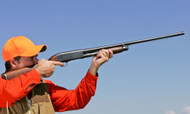Understanding Shotgun Gauges: Which One is Right for You?
Posted by Arms Protection on Oct 1st 2025
The world of firearms offers a vast array of choices, but few decisions are as fundamental for a new owner as selecting the right gauge for their shotgun. Unlike rifles, where caliber is measured in inches or millimeters, a shotgun’s bore size is defined by its "gauge." This term, which can be confusing at first, is rooted in a historical standard: it represents the number of pure lead balls of that bore diameter that would collectively equal one pound. Therefore, the smaller the gauge number, the larger the bore diameter and the more powerful the shell.
Understanding the key differences between the most common gauges—12-gauge, 20-gauge, and the .410 bore—is essential for matching the firearm to its intended use and the comfort level of the shooter.
The Workhorse: 12-Gauge
The 12-gauge is, without a doubt, the most popular and versatile choice globally. Its bore is large enough to handle the widest variety of available loads, ranging from light target shells to heavy magnum slugs and buckshot. Its popularity is an advantage in itself, meaning ammunition and accessories are easily accessible and often the most affordable on the market.
While the recoil of a 12-gauge is the heaviest of the common sizes, its power makes it the standard for virtually all applications: turkey and waterfowl hunting, competitive shooting (trap, skeet, sporting clays), and home defense. For many experienced shooters, the 12-gauge is the default choice and the only shotgun they will ever need.
The Balanced Alternative: 20-Gauge
If the 12-gauge is the powerful standard, the 20-gauge is the balanced, user-friendly alternative. It is frequently recommended for novice shooters, smaller-framed individuals, and youth due to its significantly lighter recoil and the overall lighter weight of the firearms themselves. However, its reputation as a "trainer" gun should not overshadow its effectiveness.
A 20-gauge is highly effective for upland birds (like pheasant and quail), small game, and even deer hunting with slugs. It offers an excellent compromise between downrange stopping power and manageable recoil, making it a superb choice for those who spend long days carrying a shotgun in the field.
The Outlier: The .410 Bore
The .410 is a notable exception in the gauge family. It is technically not a "gauge" but a "bore," measured in thousandths of an inch (0.410 inches). This is the smallest of the common three and is notable for its extremely light recoil and sleek ammunition size.
Because it carries a significantly smaller payload of shot, the .410 requires a much higher degree of precision and marksmanship to use effectively for hunting compared to the 12 or 20 gauge. The .410 is best suited for teaching new shooters (due to the minimal recoil), specific competitive shooting sports, and very close-range pest control. While often considered the most challenging to master, its mild manners make it excellent for building shooting fundamentals.
Key Differences Summarized
- 12-Gauge: Maximum power and shot payload, highest recoil, most versatile, widest ammo selection.
- 20-Gauge: Moderate power and payload, moderate recoil, great balance, ideal for smaller users and upland hunting.
- .410 Bore: Lowest power and payload, lightest recoil, best for teaching and niche applications, requires high precision.
Choosing the right gauge boils down to intended use and shooter comfort. If you prioritize maximum power and versatility for any situation, the 12-gauge is the clear winner. If you need something lighter for recoil or field carry weight, the 20-gauge offers superb performance without the heavy kick. Ultimately, any gauge, when matched to the right ammunition and used correctly, is an effective and enjoyable tool.

